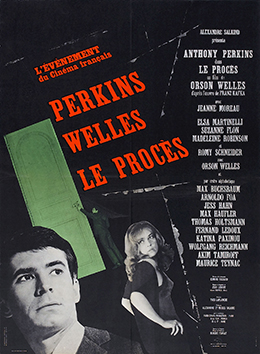 |
| Peter Bogdanovich and John Huston in The Other Side of the Wind |
Jake Hannaford: John Huston
The Actress: Oja Kodar
Brooks Otterlake: Peter Bogdanovich
Julie Rich: Susan Strasberg
Billy Boyle: Norman Foster
John Dale: Robert Random
Zarah Valeska: Lilli Palmer
Pat Mullins: Edmond O'Brien
Maggie Noonan: Mercedes McCambridge
Zimmer: Cameron Mitchell
Matt Costello: Paul Stewart
Jack Simon: Gregory Sierra
The Baron: Tonio Selwart
Max David: Geoffrey Land
Themselves: Henry Jaglom, Paul Mazursky, Dennis Hopper, Curtis Harrington, Claude Chabrol, Stéphane Audran, George Jessel
Director: Orson Welles
Screenplay: Oja Kodar, Orson Welles
Cinematography: Gary Graver
Art direction: Polly Platt
Film editing: Bob Murawski, Orson Welles
Music: Michel Legrand
Inevitably (and intentionally), Orson Welles's
The Other Side of the Wind is going to remind us of other films, including movies about making movies like Federico Fellini's
8 1/2 (1963) and such garish post-Code counterculture movies as
Easy Rider (Dennis Hopper, 1969) and
Zabriskie Point *(Michelangelo Antonioni, 1970). But what it doesn't remind me of very much are the movies made by Orson Welles. In his most troubled and inchoate films, like
Mr. Arkadin (1955), Welles always gave us something to look and marvel at, even if it was only Michael Redgrave in a hairnet. The long-posthumously assembled
Other Side doesn't give us much we haven't seen before, aside from a naked Oja Kodar wandering around the ruins of old Hollywood studio sets. Welles's intention is to spoof those counterculture movies while telling a story about how hard it is to make one. I think perhaps the chief problem lies in Welles's casting John Huston as the ill-fated Jake Hannaford, the aging and put-upon director, when he should of course have cast himself. Hannaford's young leading man, John Dale, has left the film in a huff, and what forward drive the narrative part of the film has consists of the director's response to that defection. Huston's predatory grin feels all wrong -- I never sense that his Hannaford has lost control of anything, except perhaps his libido. We need the vast imperturbable presence of Welles in the role, if only to make the point that this is the most personal, the most autobiographical of all his films. It's lamentable that it took almost half a century to bring
The Other Side of the Wind to the screen, but the truth is, the story about why it took so long -- which Morgan Neville tells in his 2018 documentary,
They'll Love Me When I'm Dead -- is more interesting than the film itself.
*Some of
The Other Side of the Wind was shot in a house across the street from the Arizona house featured (and blown up, at least in miniature) in Antonioni's movie.









